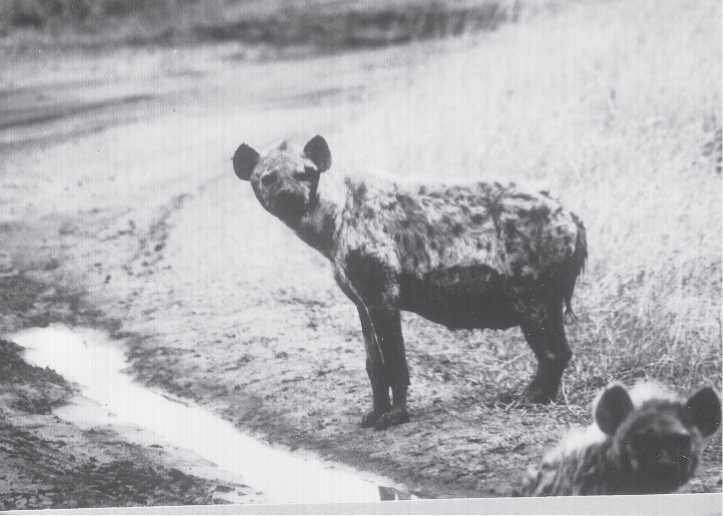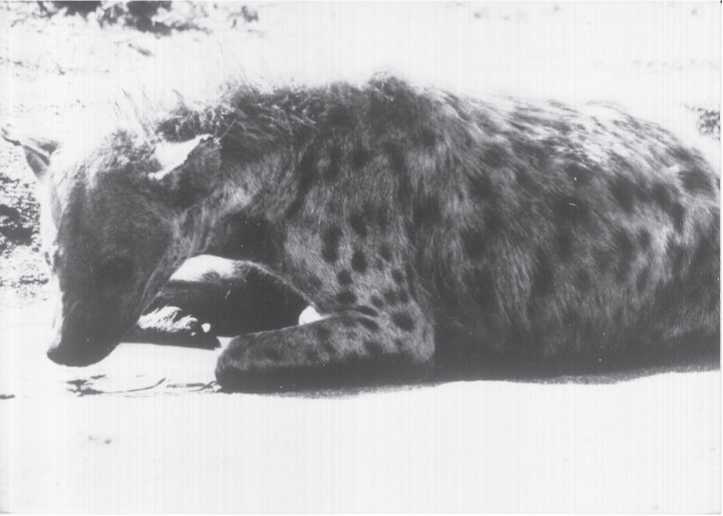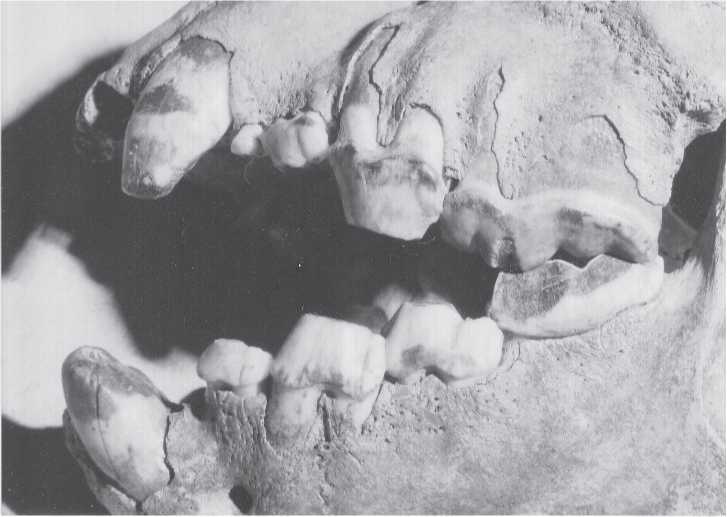Before we begin this section, we want to briefly comment on our attitude toward animals in general. Hal Herzog’s (2010) cleverly titled book on this subject, Some We Love, Some We Hate, Some We Eat: Why It’s So Hard to Think Straight About Animals, might well have added “Some We Fear.” Those we do fear are often big and powerful. But some very small animals are often feared as well - for example, scorpions, snakes of all sizes, bats. Fear arises from perceived threats of danger and harm. As the reader will learn shortly, we
Accept that fear of hyenas, probably as much as any large carnivore, has existed throughout all of human prehistory and history. They are big, nocturnal, hunt in packs, make scary vocalizations, and eat almost anything - including people. They have been vilified in almost everything we have read in our learning about them.
Studies of modern carnivores, and their relationships with humans outside of Siberia, are a source for inferring how humans and hyenas might have interacted in late Pleistocene Siberia (Aigusta 1963). We focus on hyenas because their remains (bones, teeth, scats, stomach bones) are much more common than those of bears, lions, or wolves. It is for this quantitative reason that we attribute much of the carnivore bone damage signature reviewed in Chapter 3 to hyenas.
The literature on living and extinct carnivores is extraordinary - too much to review here. In the English language alone, there are books devoted exclusively to one or more species or classes of carnivore (e. g., Busch 2000, Ewer 1973, Gittleman 1996, 2001; Kruuk 1972, 2002, Lynch 2005, Werdelin and Solounias 1991), or that have lengthy sections on carnivores (e. g., Benecke 1999). Books are often based on proceedings and articles, of which there are hundreds dealing with carnivores. This academic attention is not surprising when so much information points to the fact that humans and terrestrial carnivores are and have been in direct competition for food and territory. An article by Geist et al. (2009) that deals primarily with bears and wolves is an outstanding summary. Moreover, it reviews the various anti-predator mechanisms humans have devised as far back in time as Homo erectus. Our concern with modern carnivores is to help us better understand the damage they do to bones, and to learn how much of a danger they are and were to modern humans. We explicitly assume that their danger today was about the same or greater in the late Pleistocene of Siberia. Recent news accounts illustrate this danger:
Chignik, Alaska - An autopsy has concluded that rural teacher Candice Berner, 32, was killed by animals, and the head of the Alaska State Troopers said Thursday [February 26, 2010] that wolves are the likely suspect. However, the autopsy could not say for sure what animals are to blame. Berner’s body was found Monday about a mile outside Chignik Bay. The body had been dragged off the road to the village’s lagoon and was surrounded by wolf tracks. (Anonymous 2010a)
Cooke City, Mont. Bear rampage kills 1, injures 2 at camp ground. At least one bear rampaged through a heavily occupied camp ground Wednesday [July 21, 2010] near Yellowstone National Park in the middle of the night, killing one person and injuring two others during a terrifying attack that forced people to hide in their vehicles as the victims were torn from their tents... [one survivor] suffered several lacerations and crushed bones from bites on her arms. (Anonymous 2010b :A2 )
While wolves and bears are today common in Alaska and other western US states, and Canadian provinces, in modern Africa the spotted hyena is the most common carnivore, outnumbering lions many-fold, wrote J. Pickrell (2002) when reporting on the observations of several field workers. Given the wealth of hyena remains in our late Pleistocene Siberian sites, it may well be true that they were as common then as today in Africa (Figs. 4.1-4.2). If these living hyenas had snarled at the photographer, he might have seen a frightening mouth full of large teeth, as shown in Fig. 4.3. Hyenas have long conflicted with human populations: “African legends and folklore associate the hyena with witchcraft and the supernatural” (African Wildlife Foundation 2008).

Fig. 4.1 African spotted hyena (Crocuta crocuta), Tanzania. This animal is closely related to the larger Siberian cave hyenas discussed in this book (Matthew J. Betz photo, color, August, 1999).

Fig. 4.2 African spotted hyena, Tanzania. M. G. L. Mills (1990:36) reports observing as many as nine
Kalahari spotted hyenas feeding on an animal they had killed. H. Kruuk (2002:64) reports weight as being more than 70 kg (>150 lb). The Siberian hyenas are believed to have been larger and heavier, making them even more dangerous than modern spotted hyenas (Matthew J. Betz photo, color, August, 1999).

Fig. 4.3 Fifteen-year-old hyena maxillary and mandibular teeth. Specimen found in Fanats (Fanatic’s Cave), Khakasia (CGT neg. Krasnoyarsk Regional Museum 8-7-98:2).




 World History
World History









